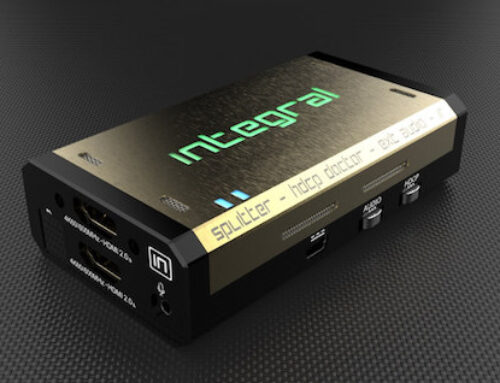By Kevin Miller
One of the most exciting pieces of news to come out of the CEDIA Expo 2015 show in Dallas last week was Texas Instrument’s announcement of their 4K resolution DMD chips for consumer 4K DLP projectors. The DLP® 4K UHD chip is approximately .7” diagonal, which is very similar in size to the DLP 1080p chip used in many single chip Home Theater and Business projectors today.
Currently, the only 4K chips available from T.I. have been the much larger 1.4 inch chips used for very large venue Digital Cinema projectors, which are much too large for projector manufacturers to incorporate in chassis’ with form factors more suitable for home use. The few 4K DLP projectors available for home theater use, since the inception of 4K (UHD) resolution in 2013, have been stratospherically expensive 3-chip models the size of refrigerators designed to drive huge screen some running so hot as to require a chimney to dissipate the heat. Talk about impractical for the home theater enthusiast.
T.I.’s new chip has 4.15 million micro mirrors, half of the picture elements required in a true 4K signal. So how does the chip deliver true 4K you ask? It is ingenious. Due to the ultra-fast switching speed of DLP technology (measured in micro seconds) two unique pixels can be displayed on the screen with each mirror, hence the DLP 4K UHD Chip can display 8.3 million pixels on the screen creating a true 4K UHD display.
Until now, true 4K resolution in the front projection home theater market has been dominated solely by Sony with their line of SXRD projectors, which are a type of reflective LCD. The company as of the CEDIA show now has four models in their lineup ranging in price from $10,000 to $60,000. Other LCD projector manufacturers, both transmissive and reflective based, have opted to put what I call “Faux K” projectors on the market. These are 1080p resolution projectors that can accept 4K resolution sources, but scale down the signal to their native 1920 x 1080 resolution. While some of them produce nice pictures if you see what they actually do to a 4K signal it is rather disappointing.
And Texas Instruments showed us just that at CEDIA in a side-by-side demonstration of a prototype 1-chip DLP projector with their new DLP 4K UHD chip up against the Sony VPL-VW350 entry level 4K SXRD projector, Epson’s LS10000 2K laser projector that accepts 4K signals, and one of JVC’s 2K eShift projectors that accepts 4K signals. The demo started with graphics with a black and white map of the world showed severe color shifts on all three of the LCD based projectors, and text that was chopped up and largely unreadable on the “Faux K” projectors. The Sony delivered the text reasonably well, but not nearly as crisp as the DLP projector, but did have a magenta cast to it that was odd. A spread sheet revealed unreadable text below about a 10 point font size on the Epson and JVC 2K projectors. Finally, moving video revealed a loss of detail on all of the LCD based projectors including the Sony. Fine detail on rock surfaces was clearly visible on the T.I. DLP, slightly blurred on the Sony 4K projector, and severely softened on the 2K projectors.
Having long been a proponent of DLP display technology for front projection home theater over all of the various types of LCD display technologies, I am thrilled that Texas Instruments has finally brought us a small enough chip that will bring 4K DLP to the home in much more affordable price ranges. T.I. is slated to deliver 1-chip and 3-chip light engines with the new chip to projector manufacturers in April of 2016, which means by this time next year we will have both 1-chip and 3-chip 4K UHD DLP projectors in the home theater market.





